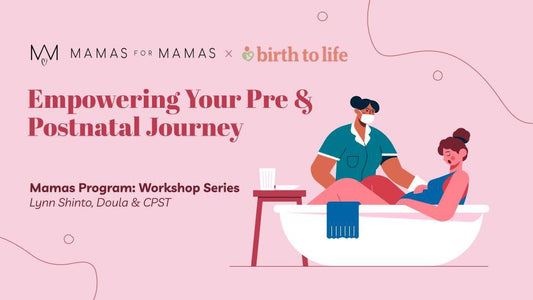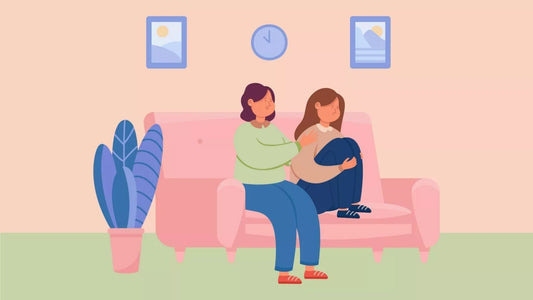The Ultimate Guide to Baby-Proofing Your Home
Congratulations! The journey of parenthood is an exciting and rewarding one, and as you prepare to welcome your little one into your home, it's important to ensure that your space is safe and secure. Babyproofing, or childproofing your home, is a crucial step in creating a safe environment for your baby to explore and grow. In this comprehensive guide, we'll walk you through the process of baby-proofing your home room by room, providing expert tips and advice along the way.

When to Start Baby-Proofing
Childproofing is a task that should be tackled before your little one starts to explore on their own. While it's never too early to start thinking about safety, it's recommended to begin baby-proofing when your baby is around 4 to 6 months old, as this is when they start to crawl and become more mobile. However, it's never too late to baby-proof, so if your baby is already on the move, it's important to take action as soon as possible.
General Baby-Proofing Tips
Before we dive into specific room-by-room babyproofing strategies, let's cover some general babyproofing tips that apply to every area of your home.
- Install working smoke and carbon monoxide detectors on every level of your home and in the hallways outside of bedrooms. Test them regularly and replace batteries as needed.
- Secure heavy furniture and appliances to prevent tipping accidents. Use furniture straps or brackets to anchor bookshelves, dressers, and televisions to the wall.
- Cover sharp corners and edges with corner guards or padding. This applies to furniture, countertops, and any other surfaces that could pose a risk to your baby.
- Use outlet covers and cord organizers to keep electrical outlets and cords out of your baby's reach. Be sure to choose outlet covers that are difficult for a child to remove.
- Store hazardous substances out of reach. This includes cleaning supplies, medications, and other potentially dangerous substances. Use childproof locks on cabinets and drawers to prevent access.
- Keep small objects and choking hazards out of reach. Be diligent about picking up small items such as coins, buttons, and batteries, as these can be choking hazards for young children.
Now that we've covered some general tips, let's move on to baby-proofing specific rooms in your home.

Baby-Proofing the Nursery
The nursery is where your baby will spend a significant amount of time, so it's crucial to create a safe and comfortable space for them. Here are some key considerations for baby-proofing the nursery: ensure the crib mattress fits snugly, install a universal guard rail for the crib to prevent falls, and avoid using crib bumpers as they pose a risk to your baby's safety.
- Ensure crib safety: Follow the American Academy of Pediatrics (AAP) guidelines for safe sleep. This includes using a firm mattress, removing soft bedding (such as pillows and blankets), and ensuring that the crib meets current safety standards.
- Secure furniture: Anchor dressers, changing tables, and other furniture to the wall to prevent tipping accidents. Use furniture straps or brackets for added security.
- Cover electrical outlets: Use outlet covers to prevent your baby from sticking their fingers or objects into the outlets.
- Install window guards: If your nursery has windows, consider installing window guards to prevent falls. Make sure the guards are securely fastened and have bars spaced no more than four inches apart.
- Use cordless window coverings: Replace blinds or curtains with cordless options to eliminate the risk of strangulation.
- Choose baby-friendly decor: Avoid hanging heavy objects or decorations above the crib that could potentially fall and injure your baby. Opt for wall decals or artwork instead.
- Secure cords and wires: Use cord organizers or cord covers to keep cords and wires out of your baby's reach. This includes cords from lamps, monitors, and other electronics.
Remember, the nursery should be a calming and safe space for your baby. Take the time to assess the room and make any necessary adjustments to ensure a secure environment.

Baby-Proofing the Kitchen
The kitchen is filled with potential hazards, from hot stovetops to sharp objects. Follow these kitchen safety baby-proofing tips to make your kitchen a safe space for your little one: secure cabinet locks, refrigerator locks, dishwasher locks, and oven locks to prevent access to dangerous items.
- Install safety gates: Use baby gates to block off the kitchen and prevent your baby from entering while you're cooking or using appliances.
- Lock cabinets and drawers: Install childproof locks on cabinets and drawers that contain cleaning supplies, sharp objects, and other potentially dangerous items.
- Secure heavy appliances: Use appliance locks or straps to secure ovens, dishwashers, and other heavy appliances to prevent tipping accidents.
- Cover stove knobs: Use stove knob covers to prevent your baby from turning on the burners or playing with the knobs.
- Store hazardous substances out of reach: Keep cleaning supplies, chemicals, and other toxic substances in locked cabinets or high shelves.
- Avoid tablecloths and dangling cords: Tablecloths can be pulled down by a curious baby, causing objects on the table to fall. Additionally, be mindful of cords from appliances or blinds, as they can pose a strangulation risk.
By implementing these baby-proofing measures, you can create a safer kitchen environment for your little one.

Baby-Proofing the Living Room
The living room, often the heart of the home and a common hazard in living room, is where families bond and create memories. To ensure a safe environment and mitigate living room hazards, here's how you can baby-proof your living room, addressing common living room hazards examples:
- Secure heavy furniture: Anchor bookshelves, TV stands, and other furniture to the wall to prevent tipping accidents.
- Cover sharp corners and edges: Use corner guards or padding to soften any sharp corners or edges on furniture and coffee tables.
- Keep small objects out of reach: Regularly check for small objects such as coins, buttons, and small toys that could be choking hazards. Store these items in locked containers or out of your baby's reach.
- Use cord organizers: Keep cords from lamps, electronics, and window blinds organized and out of your baby's reach. Use cord covers or cord organizers to prevent your baby from pulling on them.
- Secure electrical outlets: Use outlet covers or plug protectors to prevent your baby from sticking their fingers or objects into the outlets.
- Choose baby-friendly decor: Avoid hanging heavy or fragile decorations that could fall and injure your baby. Opt for lightweight and secure wall decor.
By taking these steps, you can create a safe and inviting living room for your baby to explore and play in.

Baby-Proofing the Bathroom
The bathroom, with its slippery surfaces and water sources, can be a hazardous place for babies and young children. To promote bathroom safety and ensure bathtub safety, follow these baby-proofing tips:
- Install a toilet lock: Use a toilet lock to prevent your baby from opening the toilet lid and potentially drowning or playing with the water.
- Secure cabinets and drawers: Install childproof locks on cabinets and drawers that contain cleaning supplies, medications, and other potentially harmful substances.
- Cover sharp edges: Use corner guards or padding to cover sharp edges on countertops, cabinets, and other surfaces.
- Secure electrical outlets: Use outlet covers or plug protectors to prevent your baby from accessing electrical outlets.
- Store hazardous substances out of reach: Keep cleaning supplies, medications, and other potentially harmful substances in locked cabinets or high shelves.
- Use nonslip mats: Place nonslip mats in the bathtub or shower to prevent falls and accidents.
By implementing these baby-proofing measures, you can create a safer bathroom environment for your little one.
Baby-Proofing the Other Rooms
In addition to the nursery, kitchen, living room, and bathroom, other rooms in your home may require baby-proofing. To enhance safety, consider installing safety gates, securing windows with window locks, and keeping blind cords out of reach to prevent accidents with window blind cords:
The Bedroom
- Secure heavy furniture to the wall to prevent tipping accidents.
- Use cord organizers to keep cords from lamps, electronics, and window blinds out of your baby's reach.
- Install window guards or use cordless window coverings to prevent falls and strangulation hazards.
The Laundry Room
- Store laundry detergent, fabric softener, and other cleaning supplies in locked cabinets or high shelves.
- Keep the laundry room door closed and secure to prevent your baby from accessing potentially hazardous substances.
- Install childproof locks on cabinets or drawers that contain cleaning supplies or other hazardous materials.
The Home Office
- Secure cords and wires to prevent your baby from pulling on them or becoming entangled.
- Keep small office supplies such as paper clips, push pins, and staples out of your baby's reach.
- Use cord organizers or covers to keep cords neatly organized and out of your baby's reach.
The Garage and Car
- Store tools and hazardous materials in locked cabinets or high shelves in the garage.
- Keep the garage door closed and secure to prevent your baby from accessing potentially dangerous areas.
- Install childproof locks on car doors and windows to prevent your baby from opening them.
By baby-proofing these additional areas of your home, you can create a safer environment for your baby to explore.
Childproof Your Home For Safety
Childproofing your home is a crucial step in ensuring the safety and well-being of your little one. By implementing the tips and strategies outlined in this guide, you can create a secure and welcoming environment for your baby to grow and explore. It's important to regularly reassess your childproofing measures as your child grows and develops new skills. And most importantly, enjoy this exciting journey of parenthood while knowing that you've taken the necessary precautions to keep your baby safe in their home.
If you need further assistance or have any questions, don't hesitate to reach out to Birth to Life. I’m here to support you through every step of your parenting journey. Schedule a free call today and get the expert guidance and support you need. Your baby's safety and your peace of mind are our top priorities.







0 comments